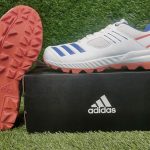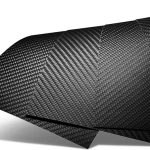 The surf/skate industry is showing notable resiliency during recent global economic challenges, posting U.S. retail sales of $7.22 billion in 2008 according to the the 2008 SIMA Retail Distribution Study released by the Surf Industry Manufacturers Association.
The surf/skate industry is showing notable resiliency during recent global economic challenges, posting U.S. retail sales of $7.22 billion in 2008 according to the the 2008 SIMA Retail Distribution Study released by the Surf Industry Manufacturers Association.
The study indicates that the surf industry experienced a slight dip in 2008 with retail sales hitting the $7.22 billion mark compared to $7.48 billion in 2006 (a 3.5% decrease). Softness was most apparent in the fourth quarter of 2008, coinciding with the global economic indicators of that time. However, the surf industry has shown substantial growth of 10% for the last five years. The SIMA Retail Distribution Study is conducted biannually, and launched in 2004 with findings showing U.S. surf/skate retail sales at $6.52 billion at that time.
“While the surf/skate retail industry is not immune to the downward pressure on retail sales nationwide caused by the global recession, the resiliency of the surf/skate industry is very positive and promising,” says Doug Palladini, SIMA President and Vice President of Marketing for Vans. “Powerful brands with close connections to their consumers will see us through these challenging times and put us in a strong position as the overall economy rebounds.”
The 2008 SIMA Retail Distribution Study cites several key factors as driving the overall consistency of the surf industry, including: loyalty of core surfers and skaters to the lifestyle and sport; and, the increasing demand for surf/skate footwear and accessories as evidenced by the double-digit growth of these key categories.
Passion and youth largely drive the surf industry. Surfers and skaters view the industry as a lifestyle, not a passing trend. Because of this, core retailers often tend to feel the downward pressure of sales in tough economic time less than the larger retailers and chains as the core retailers attract enthusiasts. While large-scale retailers may attract customers seeking mainstream fashion trends, when times get tough, those customers often are not loyal. For core surfers and skaters their sport is a necessity and, while they might not be spending as much, they keep frequenting their surf and skate shops looking to fill-in on items such as accessories and replacing old or worn-out items.
“There is evidence that the industry has underlying support from core surfers and skaters,” says Sean Smith, Executive Director of SIMA. “Because passion drives us more than money, our industry is more likely to weather economic storms. Even when times are tough were still going to surf, and were likely to purchase the attire and equipment needed for us or our kids to pursue this passion. Thats not to say that the past year hasnt been challenging as it has been for our industry and others, but this data shows we can be confident the future looks bright.”
The foot is responsible for the largest double-digit growth noted in the 2008 SIMA Retail Distribution Study. The total footwear category (mens and womens shoes and sandals) experienced a hike of 15.6% since 2006 to $1.5 billion in sales recorded in 2008. While mens footwear and sandals contribute most to this category claiming 77% of sales ($1.15 billion), womens sandals saw a significant 3% increase in their contribution to the category during the last two years, growing from $143 million in sales in 2006 to $210 million in 2008.
“Shoes have moved to the center of the teen wardrobe, with classic and skate styles setting the pace in youth fashion trends,” says Palladini.
The accessory category experienced the second-highest increase, climbing 13.1% over 2006 to a total of $561 million sold in 2008. Sunglasses and hats led the charge in increased sales, with duffel bags and watches also contributing strongly to the categorys 2008 success. Of note, sunglass sales have been trending significantly upwards during the last five years, growing from $81 million in sales in 2004 to $151.5 million in 2008.
“Depth and breadth in accessory assortments have moved the category from impulse to must-have,” states Palladini. “The quality of design and production in areas such as hats and sunglasses among action sports brands has increased exponentially in the past decade.”
Apparel (which includes mens and womens clothing, swimwear and boardshorts) has held strong as the largest category, generating the most sales overall with $1.7 billion (down just 0.8% from 2006). Mens/boys apparel accounts for 62% of these sales ($1.0 billion). Mens boardshorts also continue to see growth, increasing to $204 million in 2008 sales, up from $124 million in 2004. Womens swimwear recorded significant growth as well, increasing sales by $34 million during the last two years to hit $85 million in 2008.
Top Surf Industry Trends:
- Footwear: The overall footwear category (mens and womens shoes and sandals) experienced the most growth in 2008 with sales of $1.5 billion an increase of 15.6% from 2006.
- Accessories: Continue to see strong growth in this high-margin product category, which includes sunglasses, watches, bags, hats, belts and wallets. Accessory sales grew 13.1% from 2006 with total sales of $561 million. Sunglasses, hats and wallets saw a gain in their contribution to the overall category.
- Apparel: This product category generated the most sales with $1.7 billion (down just 0.8% from 2006), with mens/boys apparel accounting for 62% of these sales. Mens boardshorts and womens swimwear have continued to see growth as well.
- Wetsuits: Fullsuits continue to drive wetsuit sales. For the first time, the study indicates the average retail price for wetsuits is $214, with 82 as the average number of units sold per year in a surf shop.
- Hard Goods: Skateboard decks are the highest volume seller with 821 units sold being average for a retailer. Surfboard fins are the least expensive hard good, averaging $52 and 507 units sold. Also, in surfboard sales, the percentage of hybrid boards (fish/eggs/funboards) significantly increased in 2008 compared to 2006.

 The surf/skate industry is showing notable resiliency during recent global economic challenges, posting U.S. retail sales of $7.22 billion in 2008 according to the the 2008 SIMA Retail Distribution Study released by the Surf Industry Manufacturers Association.
The surf/skate industry is showing notable resiliency during recent global economic challenges, posting U.S. retail sales of $7.22 billion in 2008 according to the the 2008 SIMA Retail Distribution Study released by the Surf Industry Manufacturers Association. 












